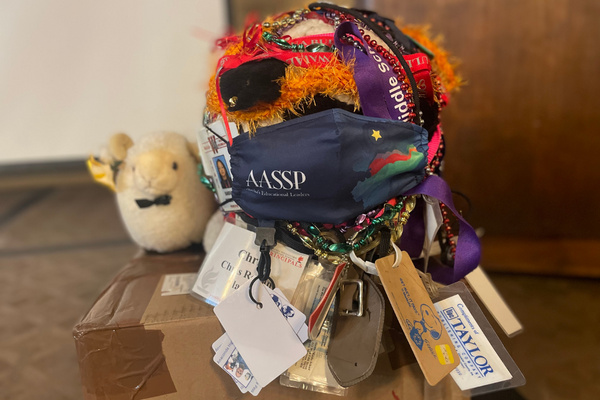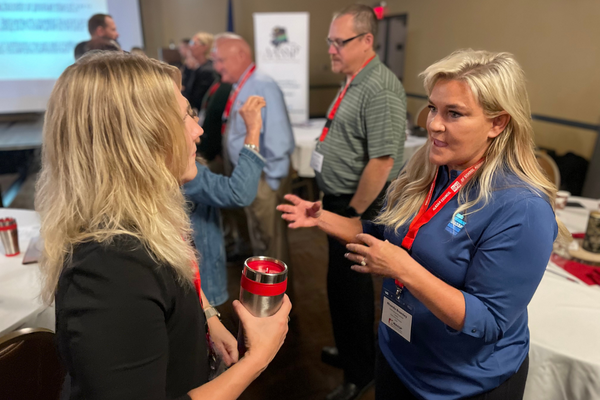The stoic sheep presided above the fray in her latest regalia as down below old friends and new ones broke into intense discussions about the state of education.

While it might be a strange sight to outsiders, the woolly mascot “Betsy the Sheep” is a familiar friend to members of Region 7, NASSP’s western affiliates. At the group’s annual meetings, Betsy is usually covered in the latest swag from Alaska, California, Hawaii, Idaho, Montana, Oregon, and Washington administrator associations. Last week was no different. School leaders from these states gathered in Juneau, AK, to make connections, improve their practice, and advocate on behalf of their students and staff. After a first-night mixer, attendees shared innovations from their states to address the top issues their schools face, including mental health challenges, student re-engagement, school leader professional development, and addressing the educator pipeline crisis.
Levi Power, the principal of Burley High School and Idaho NASSP coordinator, shared how he supports mental health at his school: “The one thing I decided I really wanted to focus on to spread throughout my school is, ‘See the good every day.’ I have talked to my staff about it and repeatedly put it in emails, put it in memos, and shared some feel-good videos with the hashtag #SeeTheGoodEveryDay…Getting to know our kids, having conversations—relationship building will never go away, it will always be the most important thing.”
Actions to improve students’ education often reach beyond the school walls. To that end, principals at the meeting were encouraged to contact their representatives in Congress to ask them to support three key initiatives for recruiting and retaining excellent educators and helping students. You can join them by clicking here.
NASSP President Kip Motta and NASSP CEO Ronn Nozoe were also in attendance, emphasizing the importance of working together to elevate the voices on the front lines of education.
“As school leaders, we know what our students and schools need, and we must be included when it comes to decision-making—not just about policy, but about practice,” said Nozoe. “That’s why it’s imperative that we lean on our collective knowledge and expertise to ensure that school and student leader voices are front and center in places where decisions are made.”
“We are here to serve you,” Motta told the attendees. “What do you need? I can promise you right now we will listen.”
As part of their professional learning, school leaders received two books, Fostering Resilient Learners: Strategies for Creating a Trauma-Sensitive Classroom and Relationship, Responsibility, and Regulation: Trauma-Invested Practices for Fostering Resilient Learners, by Kristin Van Marter Souers and Pete Hall. At one point, Hall joined the conference via Zoom to answer questions.

And, as with many school leader conferences, powerful connections with colleagues made the largest impact.
“I enjoyed networking and listening to other states in our region,” said Amy Skirvin, principal of Waldport Middle and High School and a board member of the Coalition of Oregon Association of Secondary School Administrators. “It was encouraging to know we are not alone and to gain other insights and ideas of how to tackle our problems. I’m new to the state leadership team and am thankful I was able to have this opportunity.”
Are you interested in meeting up with other school leaders? Register for the next NASSP national conference: Ignite 2023, the first opportunity for the NASSP community to gather at a school leader conference in person since 2019.
